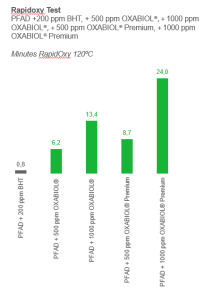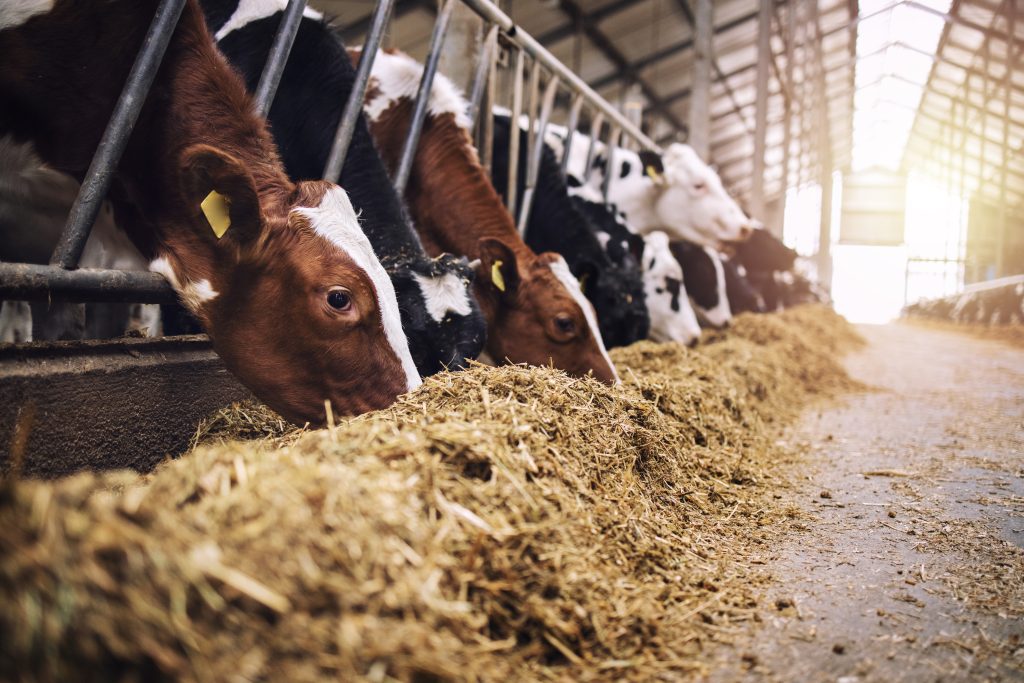Optimizing feed resources is essential in animal nutrition to ensure the health and productivity of livestock. Calcium soaps serve as a source of essential fatty acids, contributing significantly to the energy balance in ruminant diets. However, their lipid nature poses a challenge. It makes them prone to oxidation, which can degrade their quality and nutritional value, affecting livestock well-being. Tocopherols in calcium soaps are key to safeguarding feed quality while offering nutritional benefits.
What Are Calcium Soaps and Why Are They Important?
Calcium soaps are widely used in ruminant feed, derived from the reaction between calcium and fatty acids, resulting in a solid, rumen-insoluble fat source. Calcium soaps, also known as protected fat, remain inert in the rumen, passing into the later stages of digestion for efficient nutrient absorption. These supplements provide a high-energy source without interfering with rumen fermentation, making them ideal for boosting milk production and improving meat yield in livestock.
Research shows that calcium soaps can increase milk yield by up to 8% and improve milk fat content by 0.2-0.3% [1]. Additionally, their inclusion in ruminant diets has been linked to enhanced fertility and overall productivity. These benefits make calcium soaps a strategic resource in animal nutrition, especially when derived from byproducts such as palm fatty acid distillates (PFAD).
The Oxidative Challenge and the Role of Antioxidants
The primary challenge with calcium soaps lies in their susceptibility to oxidation. This process compromises the nutritional integrity of the fatty acids and can lead to the formation of harmful compounds, negatively affecting animal health. Antioxidants for animal nutrition are crucial in addressing this issue by preventing the auto-oxidation of oils and fats. Besides, by preventing oxidation, they help to maintain the quality of calcium soaps during storage.
The use of antioxidants in calcium soaps has implications beyond feed stability. By maintaining the quality of feed, producers can improve livestock health, optimize productivity, and lower operational costs.
Natural vs. Synthetic Antioxidants
While synthetic antioxidants like butylated hydroxytoluene (BHT) remain commonly used, natural options offer significant advantages:
- Higher Efficacy: Natural antioxidants demonstrate greater oxidative stability.
- Sustainability: Extracted from renewable resources, natural antioxidants align with environmental goals.
- Consumer Appeal: There is an increasing consumer demand for natural and sustainable feed solutions.
- Fewer Limitations: Unlike synthetic antioxidants, natural options are not bound by strict regulatory dosage limits, offering greater flexibility in their use.
Tocopherols are an excellent alternative to synthetic antioxidants. Tocopherols in calcium soaps function by halting harmful chemical reactions that damage fats and oils. They neutralize unstable molecules called free radicals, effectively stabilizing lipid-rich products like calcium soaps. As members of the Vitamin E family, tocopherols provide antioxidant protection for calcium soaps while also delivering Vitamin E for animal nutrition, contributing to livestock health and productivity.
The use of tocopherols not only has positive implications for animal health but also for the economic and environmental sustainability of livestock production. The preservation of calcium soaps reduces input wastage and minimizes the need for frequent replacements, which in the long term generates economic savings and reduces environmental impact.
BTSA’s Oxabiol®: A Natural Solution
BTSA has developed Oxabiol®, a line of natural antioxidants that have proven to be highly effective in the oxidative stabilization of calcium soaps. It is specially designed for animal nutrition, offering a sustainable and effective alternative to synthetic antioxidants. Studies carried out with this range have proven that Oxabiol® offers comparable or even superior performance to synthetic antioxidants in certain applications. Moreover, natural compounds are not bound by the same regulatory constraints as synthetic alternatives, offering greater flexibility in their application.
With proven results in stabilizing calcium soaps, Oxabiol® ensures feed quality while supporting environmentally conscious production practices.
Testing the Efficacy of BTSA’s Oxabiol®: The RapidOxy Method
To evaluate the effectiveness of antioxidants for animal nutrition, BTSA utilizes the RapidOxy method, an accelerated oxidation test widely recognized in the feed, food, and cosmetics industries. This method measures oxidative stability by increasing oxygen pressure and temperature within a sealed chamber. Samples are subjected to high temperatures (up to 200°C), and the pressure is monitored until a significant drop indicates oxidation.
BTSA conducted studies using RapidOxy to test the performance of its Oxabiol® range of natural antioxidants in stabilizing PFAD, a common base for calcium soaps. The results demonstrated significant improvements in oxidative stability compared to untreated PFAD and samples treated with synthetic antioxidants like BHT.
The test analyzed the following samples:
- PFAD Without Antioxidant
- PFAD + 200 ppm BHT
- PFAD + 500 ppm OXABIOL®
- PFAD + 1000 ppm OXABIOL®
- PFAD + 500 ppm OXABIOL® Premium


These findings highlight the superior performance of Oxabiol®. Compared with no antioxidant use, Oxabiol® increased oxidative stability by 13,38%, at 1000 ppm inclusion level. Even more impressive are the results from the Premium variant, with a remarkable rise of 24,03% at 1000 ppm.
Conclusion
Antioxidants for animal nutrition are indispensable in the production and application of calcium soaps. Tocopherols in calcium soaps play a pivotal role in protecting feed quality, ensuring nutritional benefits, and addressing sustainability concerns. BTSA’s Oxabiol®, validated through the RapidOxy method, represents a proven solution for antioxidant protection for calcium soaps, offering efficacy, sustainability, and consumer appeal.
For producers seeking to enhance feed quality and improve livestock outcomes, the integration of natural antioxidants into ruminant diets is not only a scientific advancement but also a step toward a more sustainable future.
Sources
- Handojo L, Purnomo AS, Yuliastri F, Budiyono A. The effect of water temperature in saponification process for producing calcium soap from palm fatty acid distillate. IOP Conf Ser Earth Environ Sci. 2018;141:012010. doi:10.1088/1755-1315/141/1/012010.

